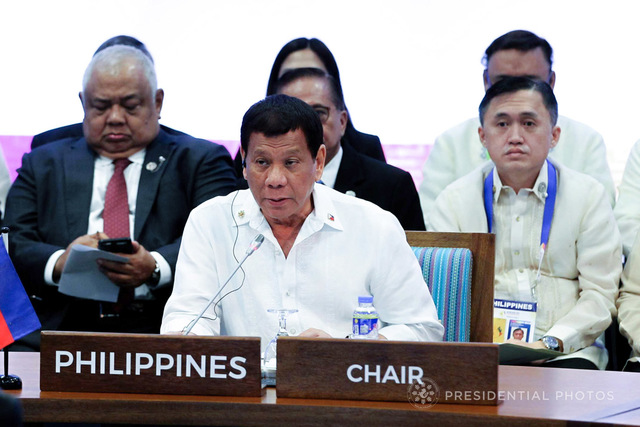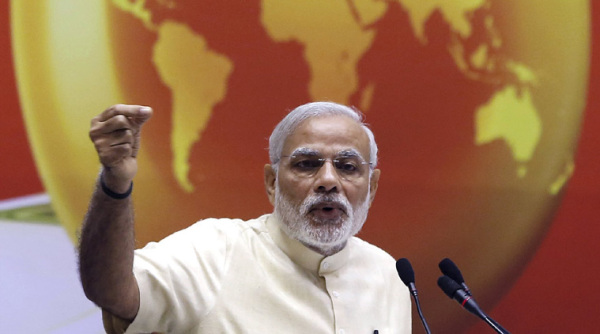Commentaries
The views expressed are the author's alone and do not constitute official positions of APPFI.
The views expressed are the author's alone and do not constitute official positions of APPFI.

Photo from Creative Commons
The Indo-Pacific, as a geopolitical concept, was first coined in 2007 by Gurpreet Khurana in an article published by Strategic Analyses. Referring to the strategic and political space covered by the Indian and Pacific Oceans, the term has since been used in speeches by Japan’s Prime Minister Shinzo Abe in 2007 and US President Donald Trump in 2017. Australia’s 2012 White Paper on the Asian Century applies the concept extensively. The concept of an ‘Indo-Pacific’ thus vacillates between that of a geographical idea and a strategic area. Wedged between the two Oceans, Southeast Asia naturally plays a critical role in Indo-Pacific security.
ASEAN celebrated 50 years of its formation in 2017 in the midst of reminiscence of how the organisation has grown. Whereas the usefulness of ASEAN continues to be debated, it is quite clear that an Indo-Pacific without ASEAN will not be any better. So how can ASEAN contribute to the Indo-Pacific in 2018? This paper focuses on the agenda of the 2018 ASEAN Chair and relates the goals to broader Indo-Pacific affairs. It also discusses what more needs to be done by ASEAN.
Words matter greatly in diplomatic statements. They reveal political attitudes and power relations, and are potential precursors to future state actions and policy behaviors. In recent years, the term “Indo-Pacific” has become widely resonant as a diplomatic and geopolitical construct, especially at the highest levels of Australian, Indian, Japanese, and American governments. During his Asia tour last year, US President Donald Trump consistently used the term when speaking to Asian counterparts.
Gurpreet Khurana argues that the term “Indo-Pacific” highlights the importance of the “Indian Ocean” in which India, because of its growing profile, would play a greater role in Asia-Pacific affairs, particularly the maintenance of a maritime environment that is conducive to regional economic growth and development. To others, the term “Asia-Pacific” is a “more narrow East Asian or Western Pacific formulation.” This observation has basis because India is absent in economic arrangements such as the Asia-Pacific Economic Cooperation (APEC) and the Trans-Pacific Partnership (TPP).

Photo from PCOO.gov.ph
“The United Nations,” the American diplomat Richard Holbrooke once said, “is only as strong as its member-states wish it to be.” To an even greater extent, the same is true for the Association of Southeast Asian Nations (ASEAN). A loose grouping of diverse countries, ASEAN operates primarily through the principles of consensus and consultation which, in practice, means that every member-state has a veto power.
Arguably, these guiding principles have served ASEAN well in decades past. However, recent events suggest that, underpinned by these principles, ASEAN appears to show some signs of strain in addressing regional security issues, foremost of which is the South China Sea (SCS). ASEAN plays a leading role in shaping the multilateral architecture of the region. As Amitav Acharya pointed out, “[t]here is currently no alternative to ASEAN’s convening power in Asia” since the “great powers are not capable of leading Asian regional institutions because of mutual mistrust and a lack of legitimacy.” In this context, the SCS dispute, as one scholar emphasized, will be a “hard case test” of both ASEAN’s capacity to resolve/manage the issue among affected member-states and promoting the overall regional peace and stability.
After five months in battle, Marawi City in the Philippines was declared liberated from the control of the homegrown pro-ISIS Maute group. The attack was significant not just for the Philippines but also for ASEAN, as terrorists were attempting to obtain a foothold in the Southeast Asian region. However, the liberation should not make ASEAN complacent. With the growing threats of terrorism and its use of modern technology, ASEAN should beef up security measures and work with other countries that share these security concerns.
 Photo from The Indian Express
Photo from The Indian Express
Several countries extended assistance to Philippine security forces during the Marawi crisis. The United States provided technical and logistics assistance, and claimed that no US troops were on the ground fighting alongside Filipino soldiers. China sent rifles and ammunition. Aside from these, the Philippine government had received rehabilitation aid even before the crisis ended. India, for instance, donated US$500,000 to rebuild the devastated city. It was the first time for the country to send outreach to another nation to help counter terrorism.
India is one country that has had much experience in dealing with violent extremism. ASEAN should take advantage of what an increasingly proactive India can offer in countering terrorism and transnational illegal activities that come along with it. In terms of long term assistance, India is providing support for the Philippines in cybersecurity information exchanges and through the training of officers handling deradicalization. New Delhi’s efforts to secure and monitor cyberspace can help track activities of terrorists and prevent extremist recruitment not just in the Philippines but in Southeast Asia.
In what other areas do ASEAN’s and India’s interests in security converge? How can their partnership enhance the broader security of the region?